| |
Cryptocoryne ×zukalii Rataj |
Click on the picture to get the full image (ca. 50 kB) |
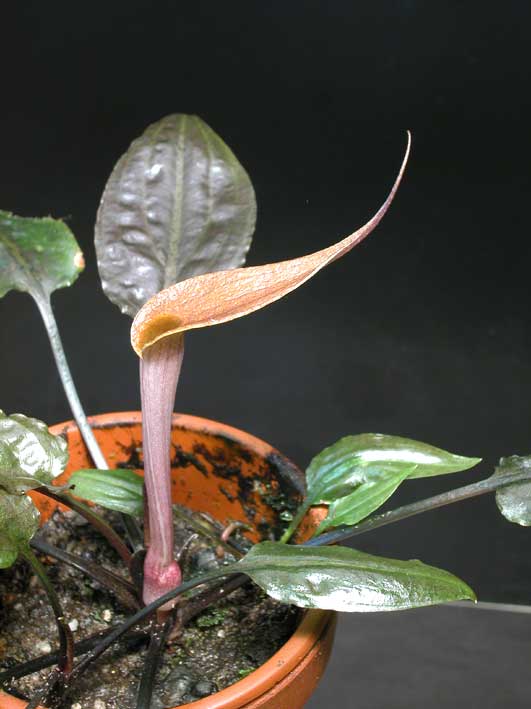 |
The typical aspect of the spathe of C.
zukalii is the long limb that is at right angles to the tube (in contrast to f.e. C.cordata).
The limb of the spathe is more or less smooth and has a typical brownish-yellow color.
coll. hort., cult. B 908 |
|
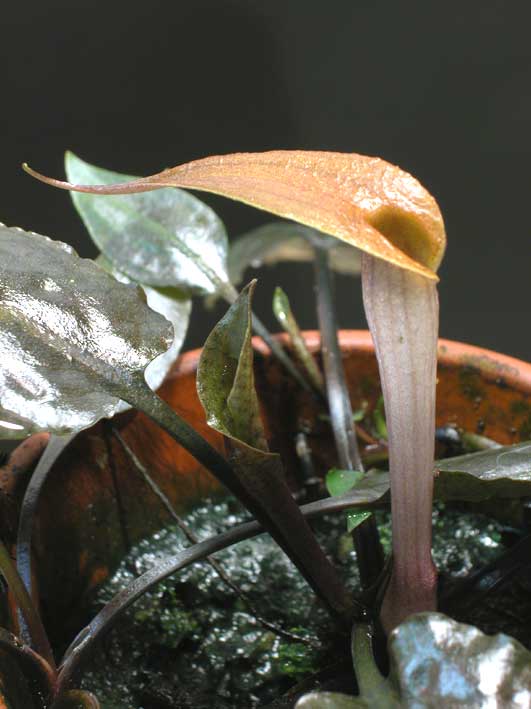 |
The leaves are truncated to cordate and are like
some types of C. cordata. The lower side easily develops a red color. The upper
side of the leaves is rather dark green. Most times C. zukalii has slight bullate
leaves.
coll. hort., cult. B 908
|
|
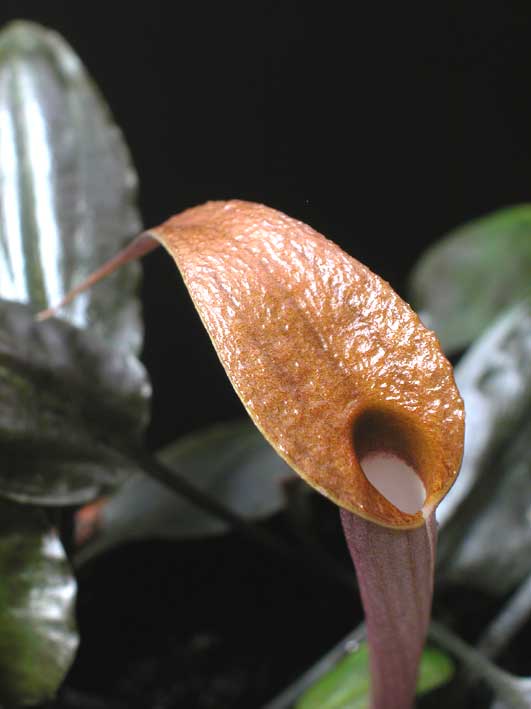 |
The throat is not widening and ends with sharp
border, which is not exact a collar.
coll. hort., cult. B 908 |
|
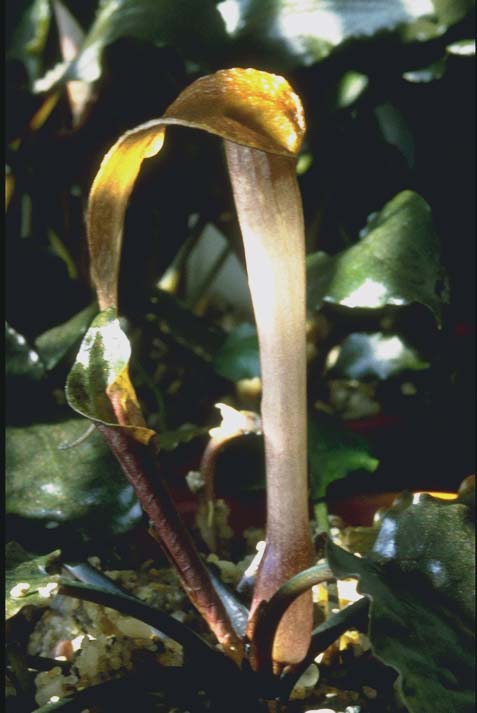 |
After a few days the limb of the spathe bent
down.
coll. hort., cult. W30
photo van Wijngaarden |
|
| |
|
|
|
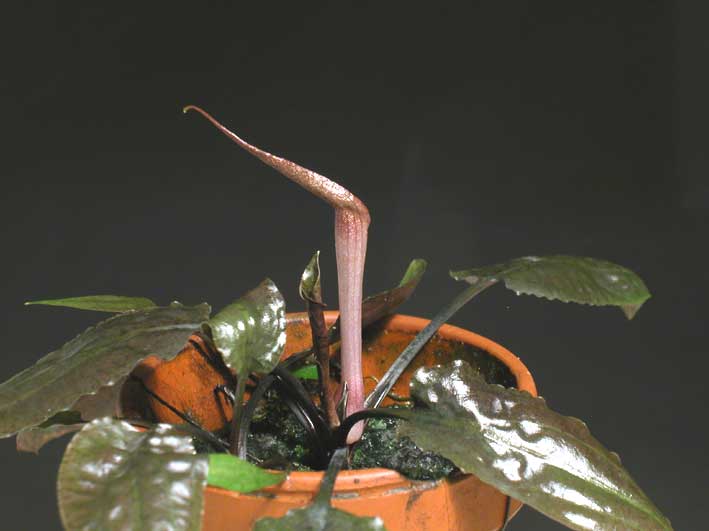 |
A bud one day before opening.
coll. hort., cult. B 908 |
|
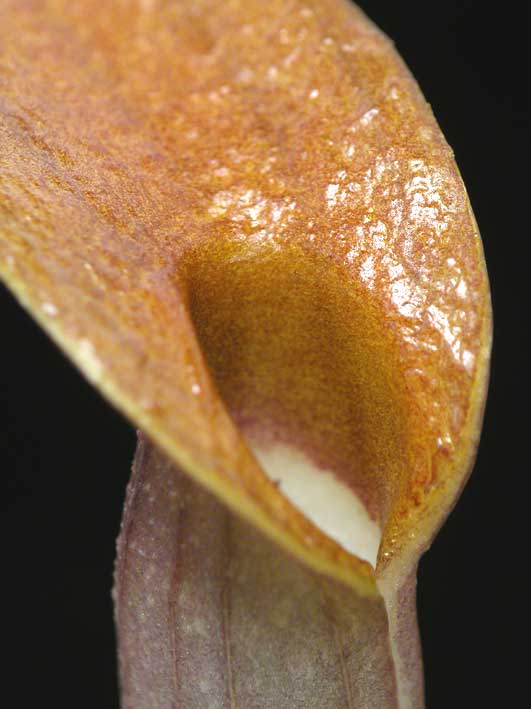 |
Detail of throat. The upper part of the tube is
narrowing at the end. Note the sharp transition from the white tube inside.
coll. hort., cult. B 908
|
|
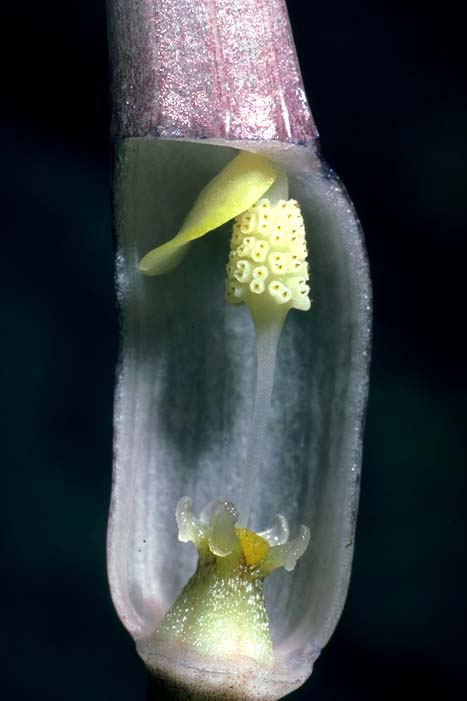 |
The kettle of C. zukalii is not to
distinguish from a 'normal' kettle as seen in C. cordata. Note the yellow valve
over the male flowers, closing the kettle after ca. one or two days.
coll. hort., cult. B 418 |
|
 |
Another length section of the kettle of a fresh
opened spathe. The valve admits insects to entry the kettle.
coll. hort., cult. B 908 |
|
| |
|
|
|
Cryptocoryne zukalii is one of the Crypts of which the locality is not known.
The plants were collected and exported by Y.W. Ong from Singapore in the 70's (Jacobsen
& Bogner 1987, Vlugt 1989). Around 1975, I got C. zukalii from Robert
A.Gasser (Quality Plants, Florida USA). Almost certain is that Gasser too got his plants
from Ong. In 1999 I visited Ong and he assured me that the plant was collected somewhere
in W. Malaysia by a local collector. The plant however is never collected again as far as
I know.
C. zukalii is rather seldom seen in aquaria but is certainly a good to cultivate
plant. Not flowering specimens are hardly to distinguish from C.
cordata.
De Wit (1990) does not recognize C. zukalii as a good species, probably due to
the rather poor description of Rataj (1974, 1975). The picture in Rataj's book however
(Rataj & Horeman, 1977) is good. Jacobsen and Bogner (1987) pointed at a close
relation between C. zukalii and C. jacobsenii.
Updated June 2004 |
Literature.
- Arends, J.C., Bastmeijer, J.D. & Jacobsen, N., 1982, Chromosome
numbers and taxonomy in Cryptocoryne (Araceae).II., Nord.J.Bot. 2 : 453-463.
- Dötsch, A., 1986, Cryptocoryne zukalii (Pflanzenportrait), Aqua-Planta 1-86 : 21-22.
- Jacobsen, N., 1982, Cryptocorynen, Alfred Kernen Verlag, Stuttgart.
- Jacobsen, N. & J. Bogner, 1987, Die Cryptocorynen der Malaiischen Halbinsel (4.Teil,
Schluss), Aqua-Planta 3-87 : 96-103.
- Möhlmann, F., 1985, Zukals Wasserkelch - Cryptocoryne zukalii, Aquarien Magazin 19(9) :
391-393.
- Rataj, K., 1974, New cultivated species of the genus Cryptocoryne (Araceae), Folia
Geobot.Phytotax. 9 : 313-314, plates 15-16.
- Rataj, K., 1975, Revision of the genus Cryptocoryne Fischer, Studie CSAV, c.3.Praha.
- Rataj, K. & Horeman, T.J., 1977, Aquarium Plants, TFH Publ, USA.
- Vlugt, P.J.van der, 1989, Cryptocoryne zukalii, Het Aquarium 59(9) : 230-233.
- Wit, H.C.D.de, 1990, Aquariempflanzen, 2. Auflage, Ulmer, Stuttgart
|
|
|
|
 |
|
|